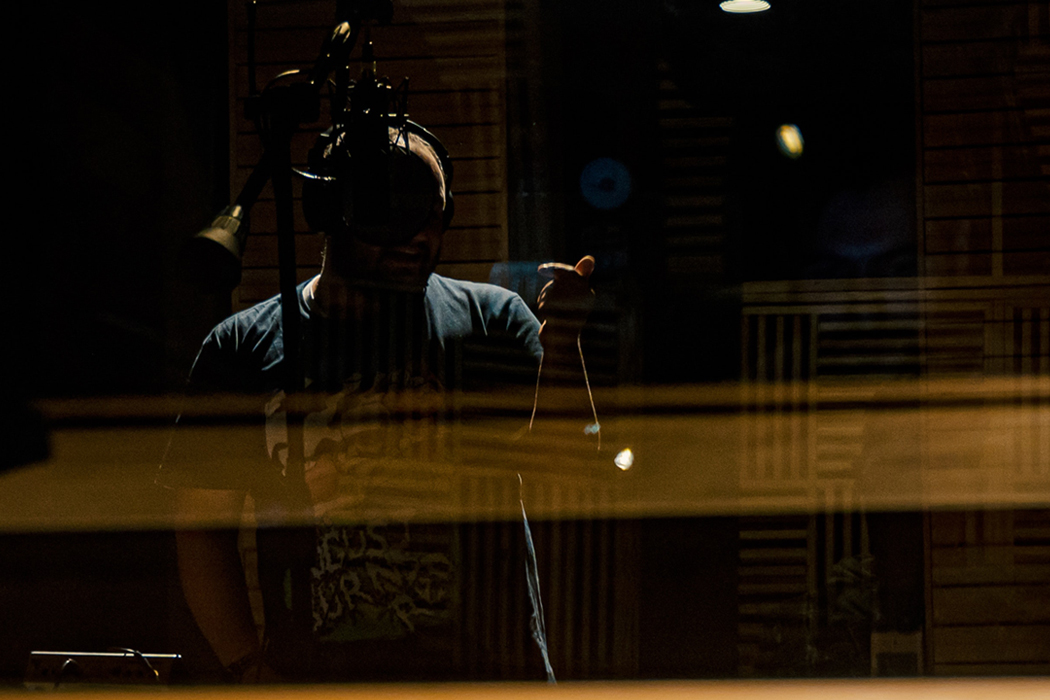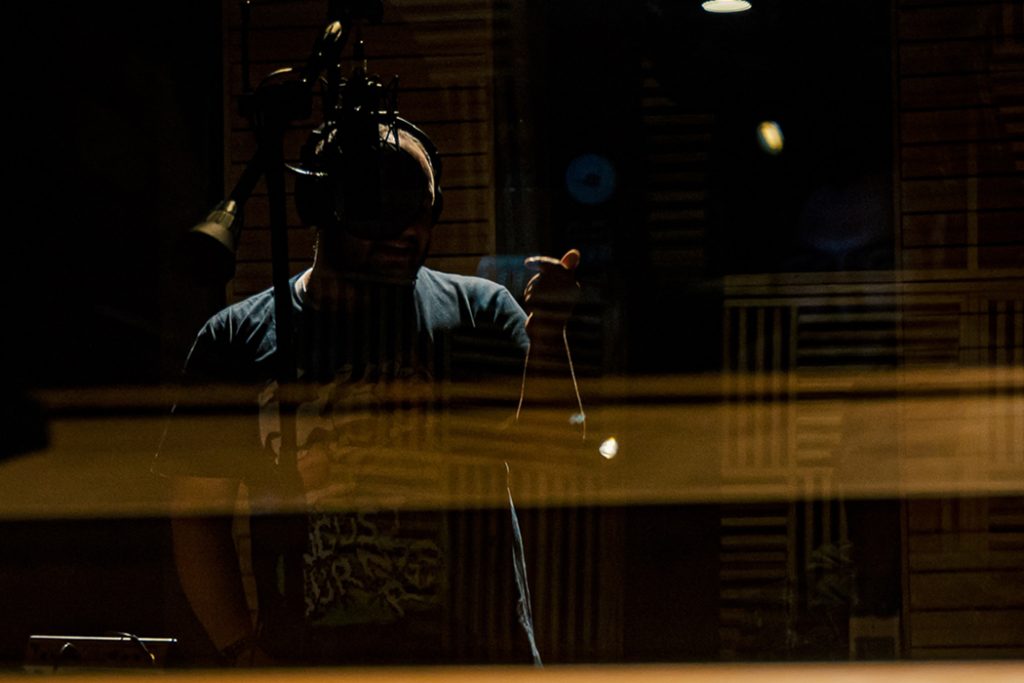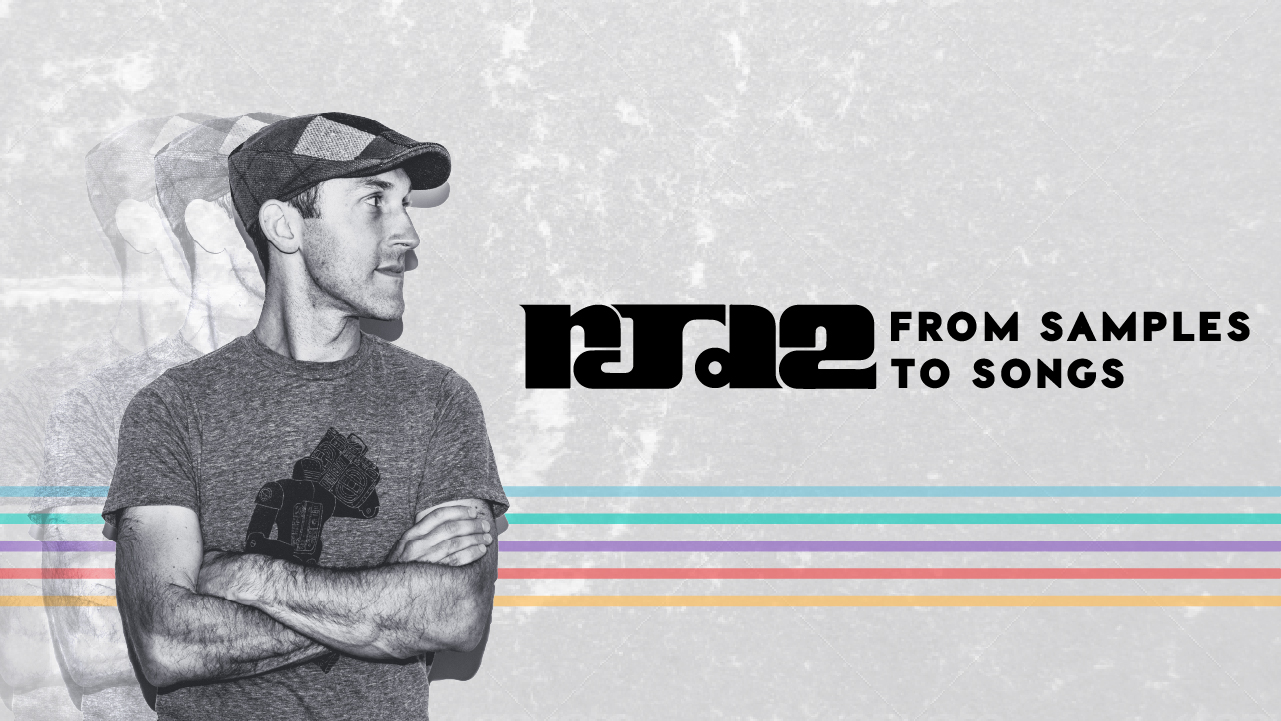
+ Learn to create and arrange original, instrumental hip-hop music from sampling pioneer RJD2 himself in his new course on Soundfly, RJD2: From Samples to Songs.
Since hip-hop’s earliest tracks started appearing, this genre has always sought to draw the listener’s attention with new and innovative ways of presenting musical sounds. Lyrical percussion, multi-voice dynamics, looped beat tracks, record scratches, speeding and slowing beats, stutters, call and response ad-libs… the list goes on.
While much of hip-hop has certainly settled into a more consistent subgenre of pop music these days, it’s still those innovative tracks that include interesting elements of sonic character that really catch our attention. (* Learn more about hip-hop’s subgenres and their various sonic offshoots in our hip-hop production course.)
There’s no doubt that adding some new, edgy, sound-driving mix adjustment would make a hip-hop track stand out above the rest. But, you don’t have to push the limits of innovation with every single track. In fact, using a handful of tried and true character-adding mix effects can still capture your audience’s attention and keep them coming back again and again.
In this article, I will present six go-to options that are certain to help add “flavor” to your sound and step your hip-hop mix up to the next level.
But first, if you’re producing hip-hop beats and looking for inspiration, creative alternatives, and to explore the work of one of the most influential beat makers of this century, look no further. Check out Soundfly’s new course with turntablist and sampling pioneer, RJD2: From Samples to Songs — he explores his creative process in detail, breaks down some of his most famous beats, and flips samples in real time.
1. Vocal Panning
Vocal panning is a very simple concept, so people tend to overlook it. But, by merely pushing some of the sounds more toward the left or the right you can potentially add a great deal of space by increasing the total soundstage width the vocals occupy. Try panning the backing vocals and/or ad-libs a little to either side, or even have a single voice switch between the different sides to increase the impact of your vocal sound.
If you have different vocalists present on the track at the same time, try panning each voice a little to one side or the other to give them their own space, just as if you were seeing them perform live on stage.
+ Read more on Flypaper: “Basic Vocal Processing in Hip-Hop Production.”
2. Echo and Delay
Echo and delay are well-known effects that have been commonly used for years. In a hip-hop mix, you can use them to add emphasis by letting a vocal part repeat once (delay) or multiple times fading out (echo) on a single lyric or lyrical phrase.
In hip-hop, delay is very commonly used on ad-libs, as well as backing vocals during the hook, to give them depth and width and helping to fill the space around and behind the lead vocals. When used more heavily, delay and echo can offer a feeling of reminiscing, which could nicely match the sound of your mix to the theme in the lyrics.
3. The “Telephone” Effect
Another tried-and-true effect in hip-hop is the “telephone sound”on vocals. This is often applied to the ad-libs or backing vocals by using parametric EQ to filter them down to a narrow band of allowed frequencies, resulting in a vocal sound like a telephone or old-fashioned radio. You can even augment it with a small amount of distortion added to accentuate the old-time recording feel. Or, push the distortion even further for a bullhorn-style effect.
This filter can also be used for certain phrases in the lead vocals in select portions of a track to make it sound to the listener like you’re hearing back something that was recorded in the past, or even listening in on a current phone conversation.
4. Beat Drop
The beat drop. We all know this one. But it’s surprising how infrequently it’s used given how much of an impact it can have on the character of your track. Just drop all (or most) of the instrumentation for a beat or two and keep only the vocals there.
This simple adjustment to the mix highlights particularly emotional passages, gives emphasis to key phrases, and creates excellent dynamic punch when the beat comes back in again. Use it sparingly, but use it!
5. Beat Filter
An alternative to the beat drop is the beat filter. Similar to the telephone filter for vocals, the idea is to remove either all the bass or all the treble from the instrumentation for a measure or two, so the backing music feels either thinner or duller for that short period of time. This adds emphasis on the vocals during that “pause” from the regular beat sound, and picks up the pace for the track once the filter is dropped and the full beat is heard again.
Sometimes this is used during an intro or breakdown of the song with a sliding filter that gradually introduces the full spectrum of the beat sound over a period of one or more more measures; an excellent sonic device for adding character to the mix.
+ Read more on Flypaper: “How to Make Your Mixes Louder (the Right Way).”
6. Vocal Doubling
Vocal doubling is another great way to add character. But it shouldn’t be confused with the typical doubling effect applied to vocals in order to fatten them up in the mix.
When thinking about adding character to the mix sound, we’re talking using much more substantial doubling. This is often applied in the hooks to make them stand out notably over the verses. The best option for this is to use real doubling, meaning you record additional takes of the same vocal track and pan them to either side of the central, main lead vocal track.
But as an alternative, you could use a doubling-effect and crank it up “to 11.” Remember that “doubling a track” does not mean simply creating additional copies of the same track. Doing that just gives you more volume with the same voice sound, even if you pan it to either side of center. A doubling effect applies a variety of EQ, dynamics, and even timing changes when it creates multiple copies of the sound, so that each version sounds slightly different than the original.
By applying this effect heavily in the hooks, or even on occasional lines in the verses that you want to have more power to them, you can get some really interesting sounds that will make your mix stand out.
—
There are certainly as many different ways to add character to your mix as there are different styles of hip-hop sound in the world. Think of these as simply some of the more standard ideas you can turn to if you’re not sure how to begin.
Mix and match them as needed to fit the proper artistic presentation of sound for each song. Don’t always use the same tweaks every time, and don’t overuse them. But don’t be afraid to push the envelope with them, either. Be selective and intentional in your choices.
Your fans will thank you for that extra time and attention put towards enhancing the character of your mix, keeping them coming back again and again.
Improve all aspects of your music on Soundfly.
Continue learning about beat making, sampling, mixing, vocal recording, and DIY audio production, with Soundfly’s in-depth online courses, including The Art of Hip-Hop Production, Modern Mixing Techniques, and RJD2: From Samples to Songs.





